
What’s scarier for Canadian communities — floods, or flood maps?
When maps showing areas most likely to flood are outdated, it puts people and property...
When the ghost moose and calf carcasses started regularly appearing in the woods of Smithers, in northwest B.C., it was too much for Eric Becker. He decided if no one else was going to do something, he would — and he had just the drone to get the job done.
Becker, a transportation worker and commercial drone operator, came up with the idea to douse tick-infested moose with medicine from the air. After all, it can be near impossible to approach the skittish animal on foot in its natural habitat.
Many researchers believe climate change is to blame for the infestations of winter ticks whose numbers have exploded in recent years. Ticks drink the blood and irritate the flesh of moose, which can rub so furiously against trees their outer coats disappear, leaving the creatures with a ghostly appearance — often a sign of imminent death.
Alongside other Smithers residents and the non-profit Wildlife for Tomorrow, Becker spent over a year researching what approach would work best to help the moose. And, because an earlier idea to dispense medicine from a paintball gun was deemed an act of wildlife harassment, the group settled on the airborne delivery of an anti-tick medicine widely used on livestock.
The group managed to drone drop the blue liquid concoction on six moose mid-March before the B.C. Ministry of Environment formally requested Becker and the group cease and desist.

Video: Eric Becker / Facebook. Gif: Carol Linnitt / The Narwhal
“Ministry staff value the idea and thought behind the project,” the B.C. Ministry of Forests, Lands, Natural Resource Operations and Rural Development told The Narwhal in an email.
“However, it is necessary to follow provincial laws and seek appropriate authorizations prior to taking on work that occurs on public land and/or involves wildlife.”
Although the group’s work is stalled as they gather information about the permit process, Becker told The Narwhal they’re eager to raise awareness about the winter tick as moose numbers decline.
He’d also like to see the province move more quickly to find a solution to ticks and hopes his drone drop technique can be a part of that.
“It’s probably complicated for them because this has never been done before and there’s no precedent … No one has quite figured out a way to deal with it,” Becker said.
“I believe it’s important for us to contribute however we can to the maintenance of the population,” he said, adding Wildlife for Tomorrow’s goal is to get proper authorizations in place while monitoring the moose that have already been treated.
The ministry said a formal application from the group to administer medicine to moose has not yet been received.
Becker’s wily method may come across as surprising, even ill-advised, but the whole drone dosing episode points to a wider range of questions perplexing wildlife managers and scientists across North America, many of whom say the end to the battle against tick infestations is far from in sight.
Climate change makes life easier for winter ticks. As milder winters become the norm, ticks have a bigger window to find a moose to attach to before cold temperatures set in. The pests cozy up for the winter, feeding off the moose’s blood supply and, when early spring arrives, they drop off to lay their eggs — usually near popular watering holes where moose can be found in the fall, when the whole cycle will repeat itself once again.
Warmer springs have meant more successful offspring for the ticks and, as a result, less successful offspring for moose. Calves struggle to survive infestations that can see tens of thousands of ticks, and in extreme cases more than 100,000 ticks, on a single animal.
The resulting deaths, driven by anemia, fur loss, weight loss or infection can be gruesome. Photos of infested corpses show row upon row of engorged ticks, their bodies tightly packed in like lines of corn on a cob.
For those who bear witness to the suffering, there can be a sense of desperation for a solution — whatever form or shape it might take.
Angelika Langen, co-founder of Northern Lights Wildlife Shelter in Smithers, said she was the one to first propose shooting moose with paintballs filled with powdered medicine.
“When I brought this to the [environment] ministry as an idea, they turned me down and said that it was animal harassment,” Langen said.
She said she was frustrated her idea was turned down in the absence of any other treatment plan.
“It’s very unfortunate that they are so close-minded about this because it’s a short, sad moment for this animal who needs a lot of help with these bugs,” Langen told The Narwhal.
When she heard of Becker’s drone project, she was eager to help. Together, they tested the liquid anti-tick medicine on an infested moose at her shelter.
“Within days all the ticks were falling off,” Langen said. “We thought we had a good thing going and then [Becker] phoned me and said the ministry had shut him down [also] for the harassing of wildlife.”
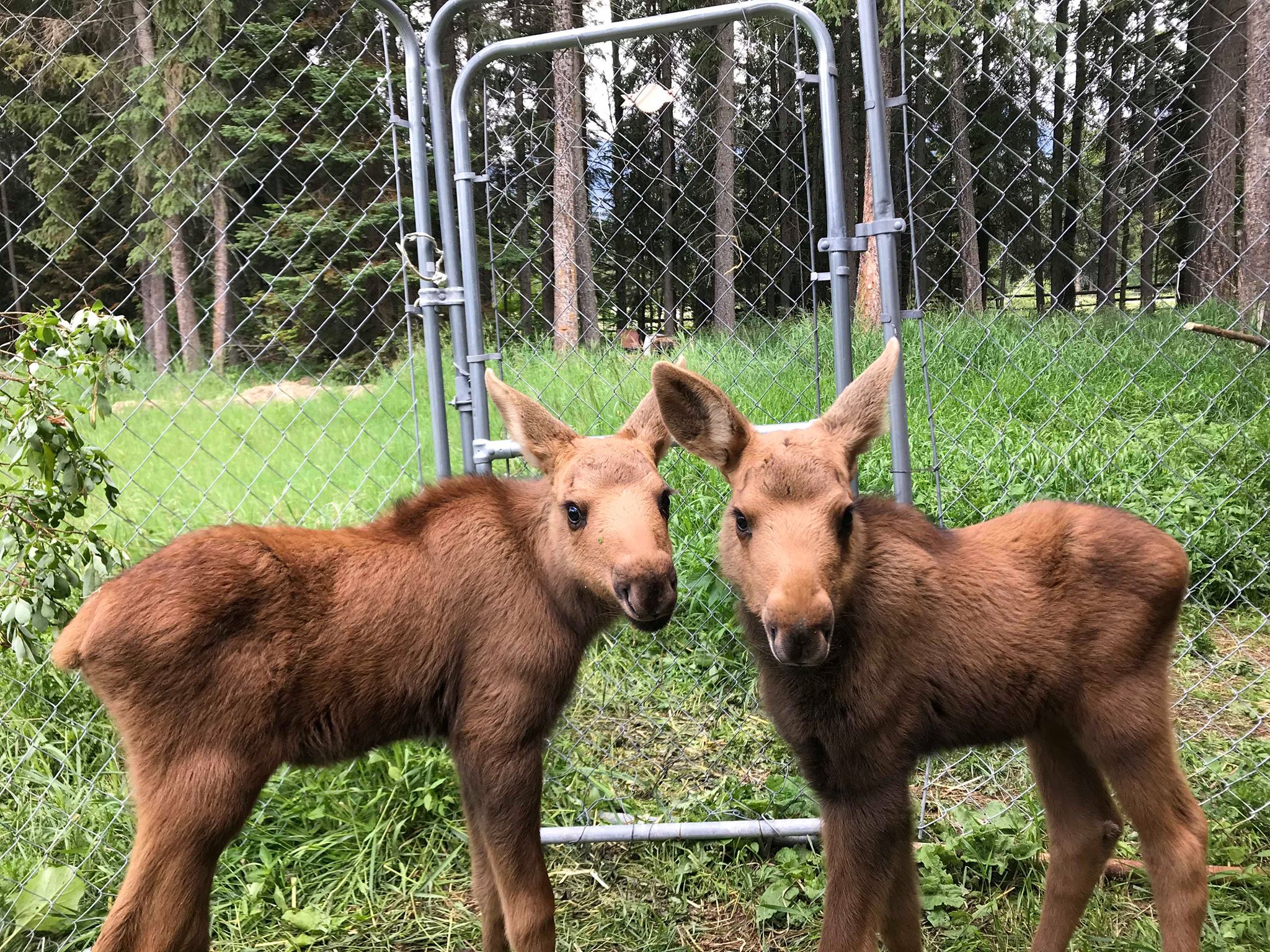
Orphaned moose twins that were adopted by the Northern Lights Wildlife Shelter in Smithers. Photo: NLWS / Facebook
But Langen isn’t deterred. She’d like to set up a garlic-infused salt attractant for moose because she heard ticks detest the aroma. She noted the idea is still in development.
Langen also pushed back against the idea that the drone dousing was entirely without approval. A provincial veterinary association and the local conservation office both offered their support to the project, giving locals the impression they could go ahead.
The veterinary association and the conservation office both referred The Narwhal to the Ministry of Forests when approached for comment.
The local community was also on board and residents reported infested moose to the conservation office or directly to Becker, who said he would sometimes be on location to treat an animal within 20 minutes of sightings.
Langen said it’s disheartening to have what felt like important work shut down so suddenly. She said she believes it is worthwhile to try to save even one moose.
“Every animal counts,” she said, adding that a female moose raised at her shelter could have several offspring over its 10- to 15-year lifespan.
Locals taking matters into their own hands when it comes to tick-infested moose isn’t without precedent in B.C.
Last year’s Provincial Moose Winter Tick Surveillance Program relied heavily on citizen scientists across B.C., with everyday people documenting and reporting sightings of moose with visible signs of ticks.
From the beginning of January to the end of April 2019, these citizen scientists reported a total of 512 moose with ticks, with peak infestations occurring between March and April.
There are somewhere between 110,000 to 185,000 moose in B.C., according to the environment ministry.
Approximately 40,000 to 95,000 are in the Skeena and neighbouring Omineca regions, according to a 2017 population census.
The tick surveillance project found in peak months, 49 per cent of the moose sighted in the Skeena exhibited hair loss, as did 84 per cent of moose sighted in the Omineca.
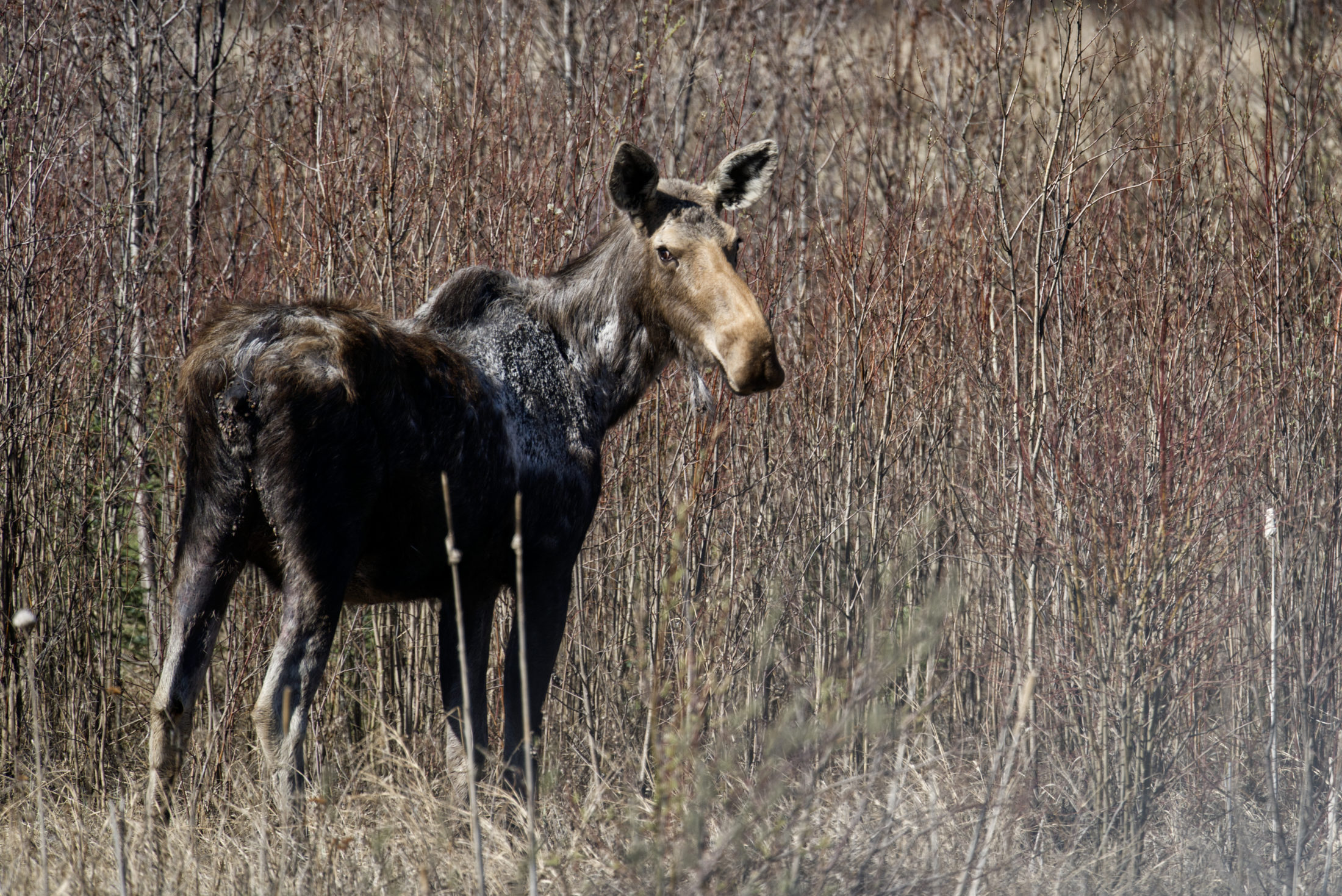
A moose cow affected by winter tick near Fort Nelson, B.C., April 2020. Photo: Ryan Dickie
Population trends show an overall decline in moose across B.C. over recent decades. A complex of forest fires, pine beetle epidemics, increases in logging and road-building, predation and hunting all seem to play a role in reducing habitat and reproduction rates.
It has only been in recent years that moose calves have started dying at increasing rates. The province says it is still uncertain as to exactly why. A five-year moose research project, which concluded in 2018, found that calves were dying in between the winter and spring.
“This late season calf mortality was not expected and appears to be the main contributing factor to the population declines,” a key findings summary of the research notes. Approximately 28 per cent of the calf deaths were ascribed to “health-related” causes.
The province notes the overall cause of moose population declines “has not been clearly identified” but adds that “some declines appear to have been caused by parasites and disease, such as winter tick” and change in climate have led to conditions “in which parasites thrive.”
The moose research project was extended until 2023 and expanded in order to further investigate the causes of calf mortality in particular.
While some suspect an increase in winter ticks might be to blame for calf and population declines, B.C. is far behind the curve when it comes to research on the pest and its role in shaping moose population dynamics.
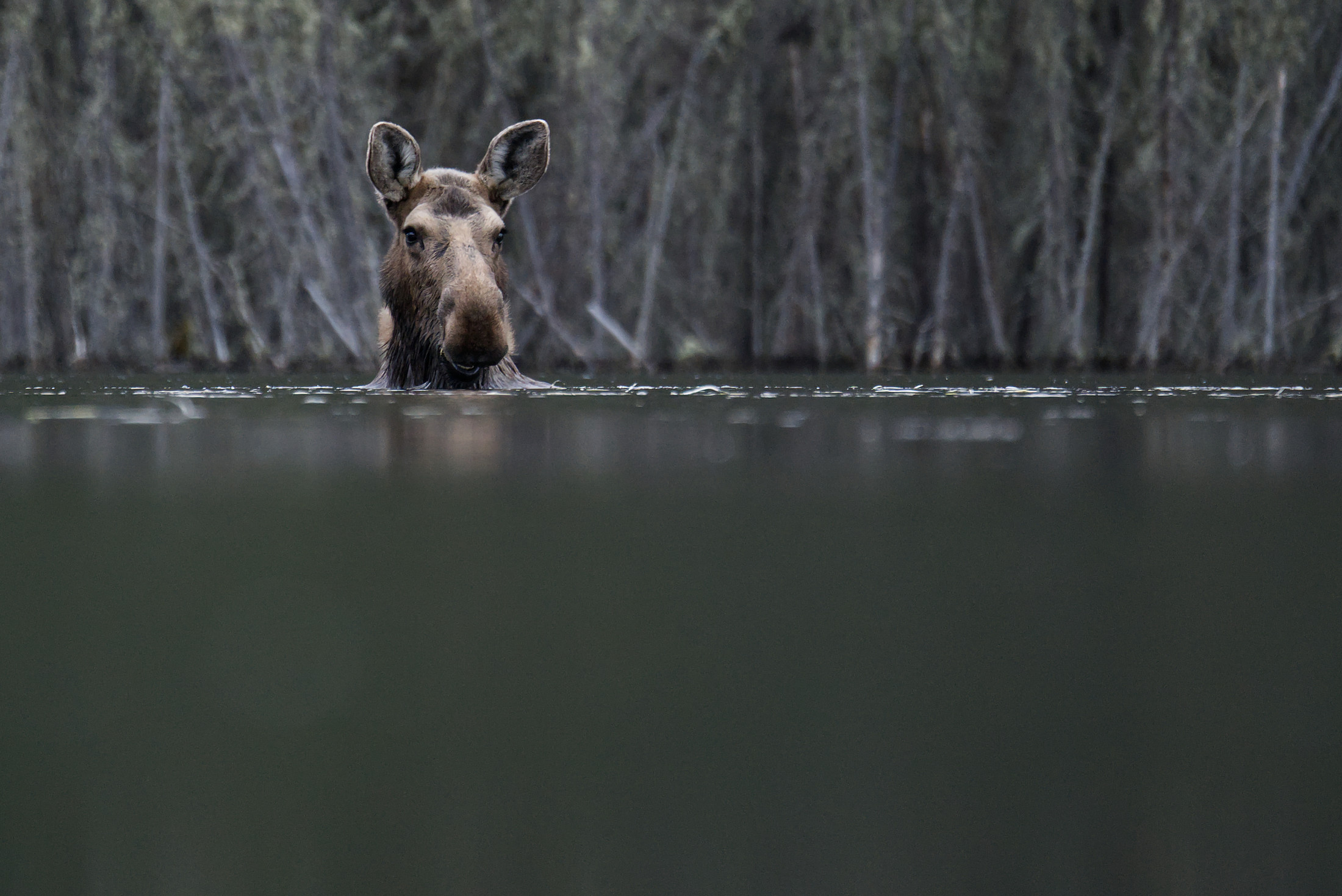
A moose takes a bath in northwest B.C. Photo: Ryan Dickie
Moose biologist Lee Kantar has seen more than his fair share of tick-infested moose carcasses in his work for the Department of Inland Fisheries and Wildlife in the state of Maine — known to have one of the highest moose densities, and thus tick infestations, on the continent.
When dead moose are reported to his department, Kantar is dispatched to examine the specimens. Many dead moose still have food in their mouth, he said, having apparently collapsed on the spot in the midst of incomprehensible suffering.
Kantar, who was given the Distinguished Moose Biologist Award at the 53rd North American Moose Conference last year, described blood-drizzled moose with matted fur rotting off the body in pockets of infection.
“People think we should take our helicopters and shoot them with a carousel or spray the landscape and kill everything out there … but they can’t understand why we can’t do that,” he said. “We have moose habitats that cover 60,000 square miles [155,000 square kilometres] — we’d never be able to treat enough moose.”
The sheer geographical spread of the winter tick problem means solutions have to be deployed at a level broad enough to match the problem’s size.
It’s a scale puzzle biologists and wildlife managers have yet to solve.
“I tell people to save one moose is a noble cause,” Kantar said. “But I can’t do anything to break the winter tick cycle.”
The dilemma also plagues University of New Hampshire biologist and professor of natural resources Peter Pekins, who has studied the devastation wrought on moose by winter ticks for more than a decade.
“It’s very understandable why people’s hearts go out to these animals. If you witness this, it’s absolutely tear-jerking, it’s an absolutely horrible way to die,” Pekins said.
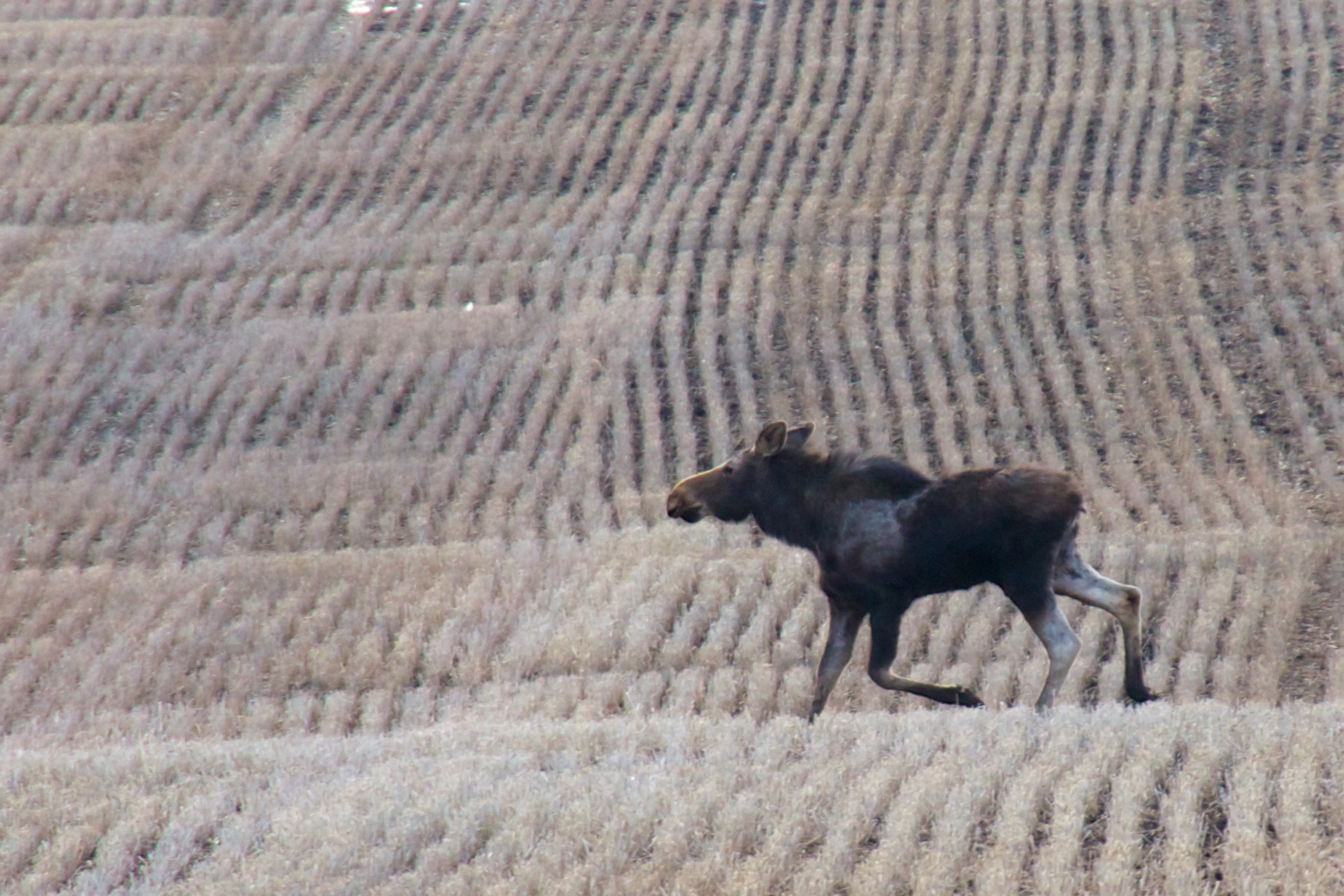
A moose with hair loss due to winter tick infestation. Photo: tuchodi / Flickr
“But on the other hand, Mother Nature is showing us the effect of the density of that population. … It’s really the scale of the thing.”
Many ideas have been floated to address the problem of ticks, which in Maine and New Hampshire has been getting progressively worse in recent years, but there aren’t enough resources to make a marked difference, Pekins said.
What would really lead to fewer ticks is fewer moose, he said. With fewer hosts, thousands of ticks would be literally left out in the cold to die off.
Accepting that climate change is a long-term problem forces one to accept that a lower density of moose is necessary to deal with the ticks, “and that’s pretty counterintuitive to the public,” Pekins said.
“We’ve run those numbers and the big unknown right now is at what density moose will be lowered enough [for the tick population] to be stabilized.”
The problems plaguing moose in the Eastern U.S. are of particular concern to Laval University behavioral ecology professor Steeve Côté, the lead on a five-year study researching winter ticks and moose in Eastern Canada, where deaths from ticks have skyrocketed in recent years.
Moose freely roam the Canada-U.S. border, giving winter ticks a free ride up north to be distributed in the Canadian population, Côté told The Narwhal.
“They have a reported calf mortality rate between 50 and 80 per cent, so that obviously created concerns for what will happen [here],” he explained.
In the United States, moose have few natural predators. But in Canada, they face bears, wolves and industrial development, particularly logging. Côté said he’s worried some Eastern Canadian populations will be wiped out if mild winter conditions persist and calves continue to die off.
“We’re focusing on the calves because they’re the most vulnerable segment of the population … we can endure high calf mortality but not as high as we’re seeing right now. If you lose 75 per cent of them, it’s not enough for the population to be stable and it starts to decrease.”
Côté’s research, considered the largest moose winter tick study in North America, also explores how smarter forestry practices can be used to prevent the outbreak of tick infestations.
Moose tend to feed in the same places in the spring — when the female ticks lay between 6,000 and 8,000 eggs — as in the autumn. This return gives tick larvae the opportunity to attach themselves to a regular retinue of moose to carry on their blood-thirsty legacy.
Côté said the research examines the environments in which winter ticks flourish, with an aim of promoting forestry in these areas, while protecting others for moose.
Altering the size or proportion of cut blocks could help by keeping ground dry, “as dry conditions are not good for the ticks,” Côté explained.
His team is hopeful better habitat management will result from their studies.
“We’d like to discourage forestry practices that favour tick survival.”
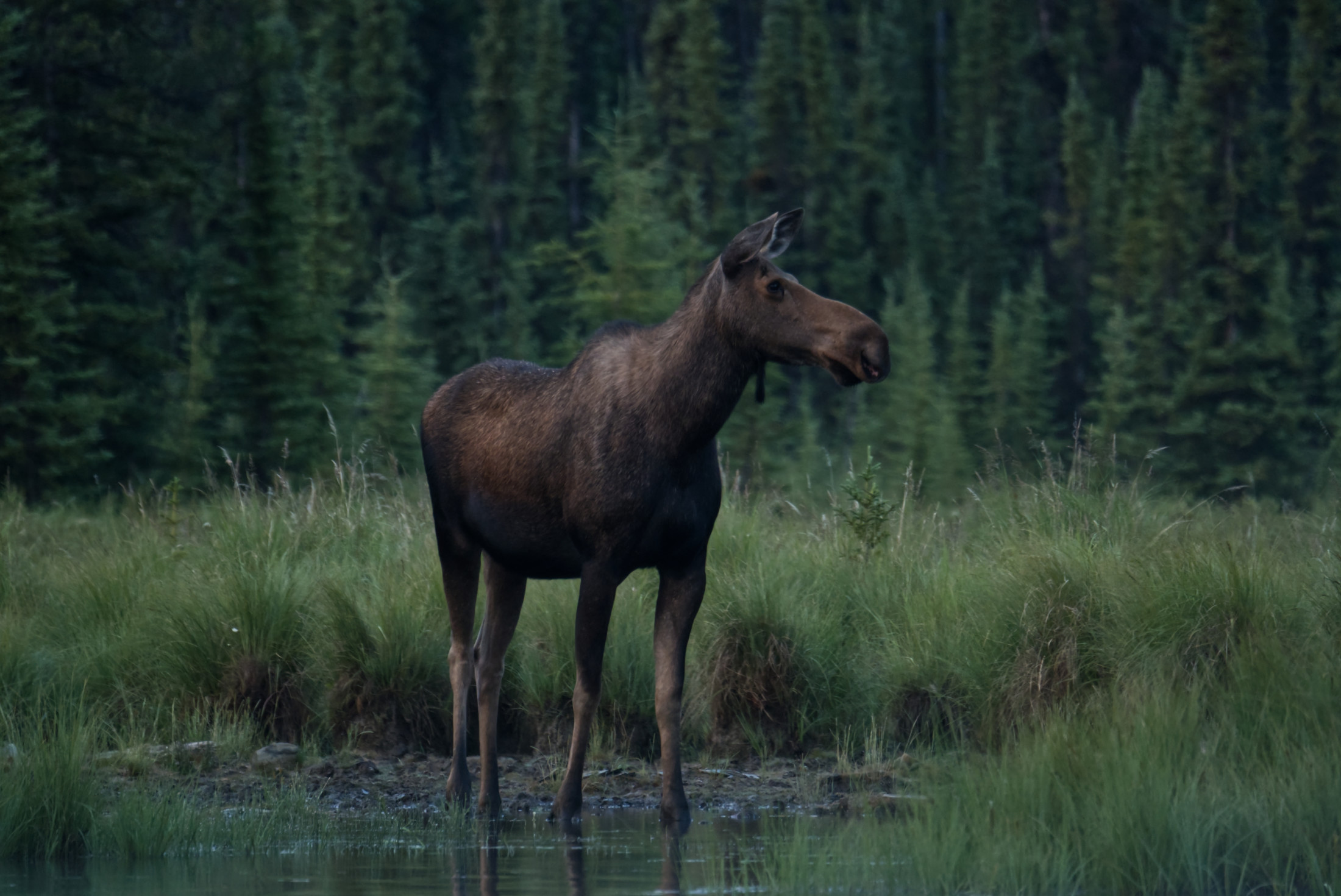
A change in logging and forestry practices could potentially help protect habitat well-suited to moose and alter habitat to decrease the presence of winter ticks. Photo: Ryan Dickie
Ed Addison, a retired wildlife health specialist with the Ontario Ministry of Natural Resources and Forestry, said climate change is not the only lens through which we should look at the tick problem.
One must also consider that moose, for all their iconic Canadian feel, are not native to North America. Ticks are.
“Moose is the exotic animal,” Addison told The Narwhal, “and the species and animals that are here have exploited them.”
Moose originated from Eastern Russia and Scandinavia, he said and “they are not adapted because it just happened yesterday in terms of [evolution].”
Deer and caribou, which are native species and have a much easier time with ticks and no problem at all with the large American liver fluke and brain worm — two other native parasites that plague moose.
It can take thousands of years to evolve antibodies, Addison said.
He agreed warming winters do increase tick vitality, but points out the pest has been documented to have killed moose before climate change was even a part of the scientific conversation.
There are reports of two trap hunters near Timmins in northern Ontario who discovered 39 dead moose plastered with ticks back in 1958, Addison said as an example. Climate change is merely speeding up an inevitability.
“These die-offs from winter ticks have been going on for a long, long time … it’s way too early in evolutionary time [for moose to adapt successfully] and of course, we humans think in terms of our lifespan so we want answers in a hurry,” he said.
But rushed solutions can lead to other, unanticipated, consequences. Dosing untagged moose with medication, for example, can create new risks for humans.
“We really don’t want an animal that’s been drugged in its recent past to be harvested for consumption until you know there’s no residual drugs in their system,” Addison said, adding that, if governments permit medicating moose in the wild, that could lead to unknown effects on human health and potential legal liabilities.
He added documentation and research is still important so government agencies know when to cut back on hunting permits and curtail other forms of human impact.
Langen, from the Northern Lights Wildlife Shelter, said without adequate measures to control ticks in place, she’d like to see the province take more action to protect moose from hunters.
“People get deeper and deeper into their territories, there’s nowhere where these animals are safe anymore,” she said.
“We want to make sure we have a healthy population.”
Addison said he wishes “there were more proactive, aggressive actions that one could take to cause moose less suffering.”
“I’d like to see humans be a little humbled by nature and not feel they have the ability to press buttons and control nature whenever they want.”
Enbridge Gas will face Waterloo Region in a hearing before the Ontario Energy Board to renew an agreement that would allow the company to continue...
Continue reading
When maps showing areas most likely to flood are outdated, it puts people and property...

We’re suing the RCMP for arresting a journalist on assignment for The Narwhal. It’s an...

As glaciers in Western Canada retreat at an alarming rate, guides on the frontlines are...